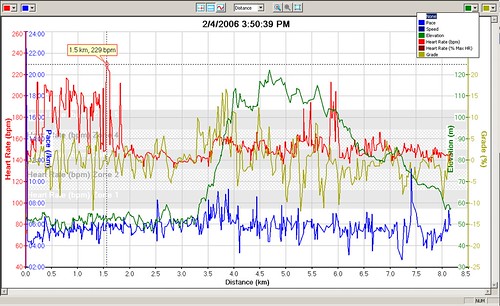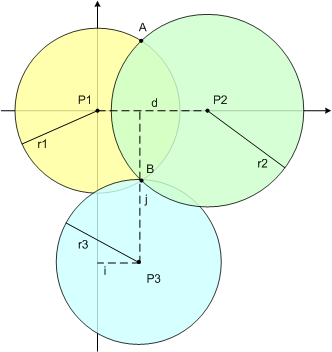GPS is infiltrating all sorts of markets that it wouldn’t normally be thought of as penetrating. Over the past several years we have seen several fitness GPS tracking solutions come to the forefront – ranging from GPS running watches, to bike GPS, to kayak GPS, to hiking GPS. All these have improving fitness as their goal and creating a unique training experience that generates great results for those using these devices.
While GPS tracking watches are only one expression of this phenomena, it is by far the most popular. As such, let us examine what are some of the best watches that feature GPS for fitness are:
The Garmin Forerunners: Best GPS Running Watches On The Market
Probably the best GPS running watch out on the market right now is the Garmin Forerunner 405. It is just a beast when it comes to giving runners of all skill levels exactly what they want in a watch.
Probably the first thing that you are going to notice about this watch is that it doesn’t even look like a GPS watch. Instead of being bulky and ugly, you find that the Forerunner 405 has a sleek and stylish design. Heck, you could even wear this watch like it was a regular wrist watch. While the battery might not work like a regular watch (it has a printed battery life of 8 hours with GPS enabled and 2 weeks in power save mode), it certainly looks like it could be one.
Once you get past the design of this running watch you are going to notice what a powerful training aid this watch is. With such features as Virtual Partner, which lets you race against a saved run that you or a friend recorded on a Garmin Forerunner 405, you get superior training aides that will help you push yourself to the next level of fitness.
Some models, like the one featured above, also have a heart rate monitor which will allow you to get a perfect picture of the areas of your workout that really push you the hardest. While there are some good techniques that you can use to approximate your heart rate without a monitor, there is just no substitute for getting the cold, hard data yourself with a monitor strapped to your chest. Some people find these devices cumbersome, especially women, but you quickly get used to them – especially when you realize how useful the information they provide is.
After you have trained, the Forerunner 405 also excels at letting you download your information to your computer. You no longer have to fumble for certain wires to hook up your GPS running watch to your computer because the 405 transmits the information from your watch to your computer wirelessly. All you have to do is bring the watch into proximity of your personal computer and you will automatically being downloading your latest workout onto your computer for Garmin’s GPS tracking software to begin its work on analyzing your data.
If you are someone that balks at the price of the Garmin Forerunner 405 you might want to consider the Garmin Forerunner 305. This is one generation behind the 405 and suffers from some of the drawbacks that the 405 was made to avoid. These include a bulky design and having to plug your watch into a computer in order to download a training session to Garmin’s awesome fitness tracking software.
However, it does beat the 405 out in some respects. One is that if you ever want to use the 305 for geocaching you can because it has a mode where your current GPS coordinates are displayed. The Forerunner 405 has no such display feature and therefore cannot be used in this function. Another benefit that some people will see with the 305 is that it makes use of the traditional button system. The Forerunner 405 uses a bezel system that allows you to quickly and simply access information from your watch on the go, but this system can be annoying to some individuals who find the touch bezel too sensitive. They gladly downgrade to the cheaper Garmin Forerunner 305 just for the buttons alone.
Timex GPS Running Watches
After Garmin, the next big player in the running watch market it definitely Timex. These watches differ from those produced by Garmin in that they usually do not feature GPS built in to the watch itself. Instead, they utilize a foot pod or some other type of GPS receiver that communicates GPS coordinates to the watch. While this generally means that the Timex watches have been much sleeker than the Garmin Forerunners in general, it also makes them a little less usable in my opinion.
Probably the best Timex GPS running watch out there right now is the Timex Ironman. It has a lot of feature that are pretty comparable to those provide by the Garmin Forerunners. Like the 305, the Timex Ironman can display your GPS coordinates for use in geocaching and other GPS related hobbies.
As far as being a great running watch with GPS, the Timex Ironman lets runners know a lot about their fitness activities. One feature that is particularly helpful is that you can set target heart rate zones that you want to train in. Once you has set this up, you can find out how long you spent in that target heart rate zone, how quickly your heart rate recovered after training, and what your average heart rate was during your run.
This Timex GPS running watch also has a 100 hour chronograph, 100 lap memory, 100 hour countdown timer, and a few different alarms to keep you abreast of your goals. It even sports an impressive battery life of 2 years, which is about 2000 times longer than the Forerunner 405! (But these numbers are just for the watch itself and not the GPS pod that comes with the watch).
The Bottom Line About The Best GPS Running Watches
The best running watch GPS is going to be the one that fits your needs and best matches what your personal fitness and training goals are. There are even more GPS running watches to consider, but we have chosen to just include these two for brevity’s sake. I hope that you find the GPS running watch that will fit your the best.


